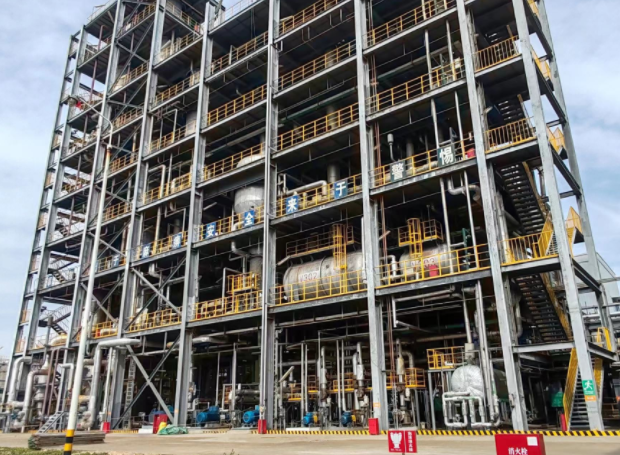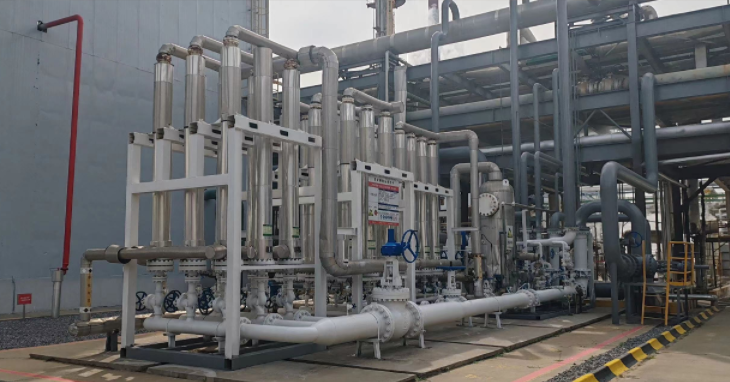Acetic acid, also known as ethanoic acid, is a vital chemical compound with numerous industrial applications. It is commonly produced in acetic acid plants, and like many chemical manufacturing processes, the production of acetic acid can have significant environmental implications. In this article, we will explore the environmental impact of acetic acid plants, including their emissions, waste management, and steps that can be taken to mitigate their environmental footprint.
Acetic Acid Production Process
Before delving into the environmental impact, it is essential to understand the basics of acetic acid production. Acetic acid can be synthesized through various methods, but the most common approach is the methanol carbonylation process. This involves reacting methanol and carbon monoxide under specific conditions to produce acetic acid.
1. Raw Materials: The primary raw materials for acetic acid production are methanol, carbon monoxide, and a catalyst, which is often a metal complex, such as rhodium.
2. Reaction: The reaction takes place in a reactor vessel, where methanol and carbon monoxide are combined in the presence of the catalyst. This chemical transformation results in acetic acid.
3. Separation and Purification: After the reaction, the mixture is separated and purified to obtain a high-quality acetic acid product. This step may involve distillation, crystallization, or other separation techniques.

Now, let's examine the environmental impact of acetic acid plants at different stages of the production process.
1. Energy Consumption
Acetic acid production is energy-intensive, primarily due to the need for maintaining specific temperature and pressure conditions in the reactor. The energy required for heating, cooling, and maintaining these conditions can lead to a substantial carbon footprint. Reducing energy consumption and increasing the use of renewable energy sources are essential steps for mitigating this impact.
2. Greenhouse Gas Emissions
One of the most critical environmental concerns associated with acetic acid production is greenhouse gas emissions. Carbon monoxide, a precursor in the production process, is a potent greenhouse gas. Additionally, the energy consumption in acetic acid plants results in emissions of carbon dioxide (CO2). Minimizing these emissions is vital, and one approach is to capture and store carbon monoxide emissions, reducing their release into the atmosphere.
3. Air Quality
The operation of acetic acid plants can release various pollutants into the air, including volatile organic compounds (VOCs) and particulate matter. These emissions can contribute to air pollution and have adverse effects on local air quality. Employing advanced emission control technologies, such as scrubbers and catalytic converters, can help reduce these emissions and protect air quality.
4. Waste Management
Acetic acid plants generate waste materials, such as spent catalysts and other by-products. Proper waste management is crucial to prevent environmental contamination. Recycling and reusing waste materials whenever possible, or ensuring safe disposal, are essential steps to minimize the environmental impact of waste generated by these plants.
5. Water Usage and Contamination
Water is used in various stages of acetic acid production, primarily for cooling and as a solvent. Effluents from acetic acid plants can contain contaminants, and discharging these effluents into water bodies can lead to water pollution. Proper water treatment and recycling can help mitigate this impact and reduce the demand on freshwater resources.
6. Environmental Permits and Regulations
Acetic acid plants are subject to a range of environmental permits and regulations, depending on their location and scale of operations. Compliance with these regulations is essential to minimize environmental impacts. It is the responsibility of plant operators to ensure that their facilities adhere to these standards.

Mitigation Measures
To reduce the environmental impact of acetic acid plants, several strategies and technologies can be employed:
1. Energy Efficiency: Implementing energy-efficient technologies and practices can reduce the carbon footprint of acetic acid production.
2. Carbon Capture: Invest in carbon capture and storage technologies to minimize carbon monoxide emissions.
3. Emission Control: Use advanced emission control systems to reduce air pollutants.
4. Recycling and Reuse: Optimize waste management processes, recycling and reusing materials whenever possible.
5. Water Management: Implement efficient water treatment and recycling systems to reduce water usage and prevent contamination.
6. Compliance and Monitoring: Ensure strict adherence to environmental regulations and monitor emissions and waste management regularly.
Conclusion
In conclusion, acetic acid plants play a vital role in producing this essential chemical compound, but their operations can have significant environmental impacts. It is crucial for the industry to continue researching and implementing innovative and sustainable practices to minimize these impacts and work toward a greener future. Environmental responsibility, energy efficiency, and adherence to regulations are key factors in mitigating the environmental footprint of acetic acid plants.

















